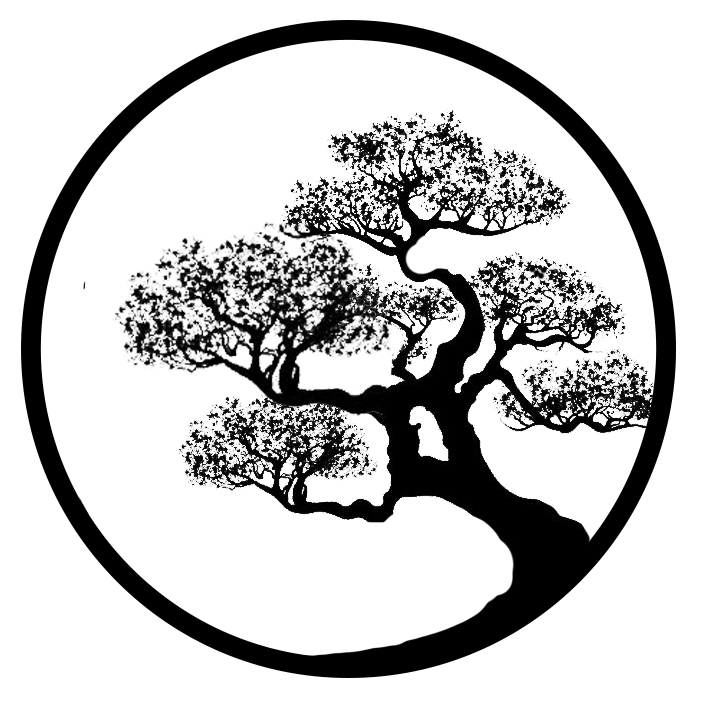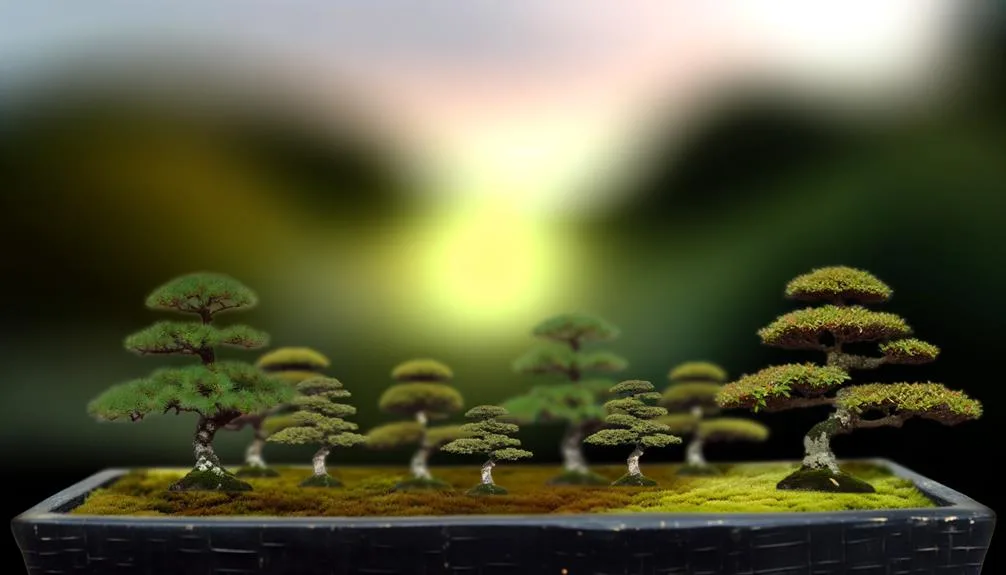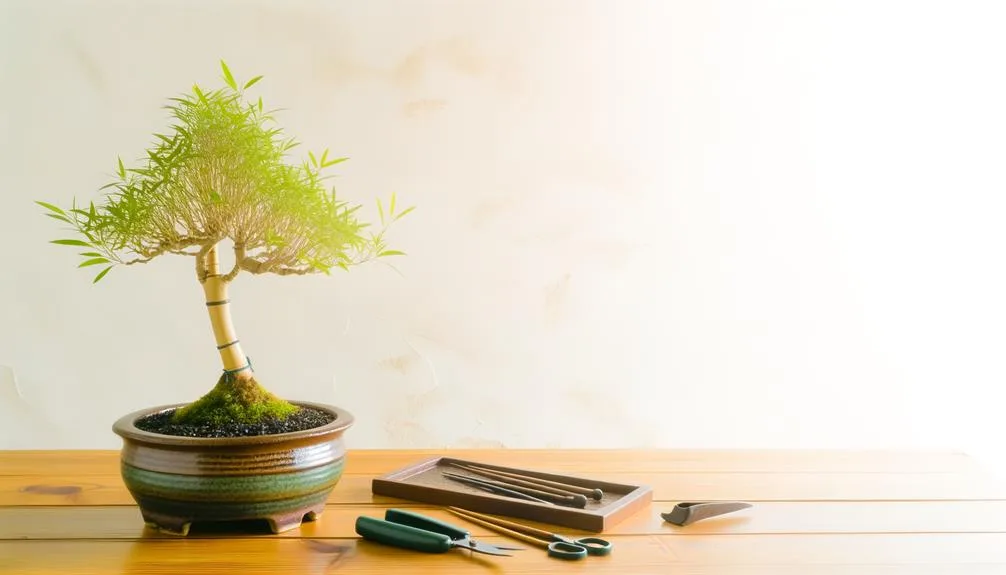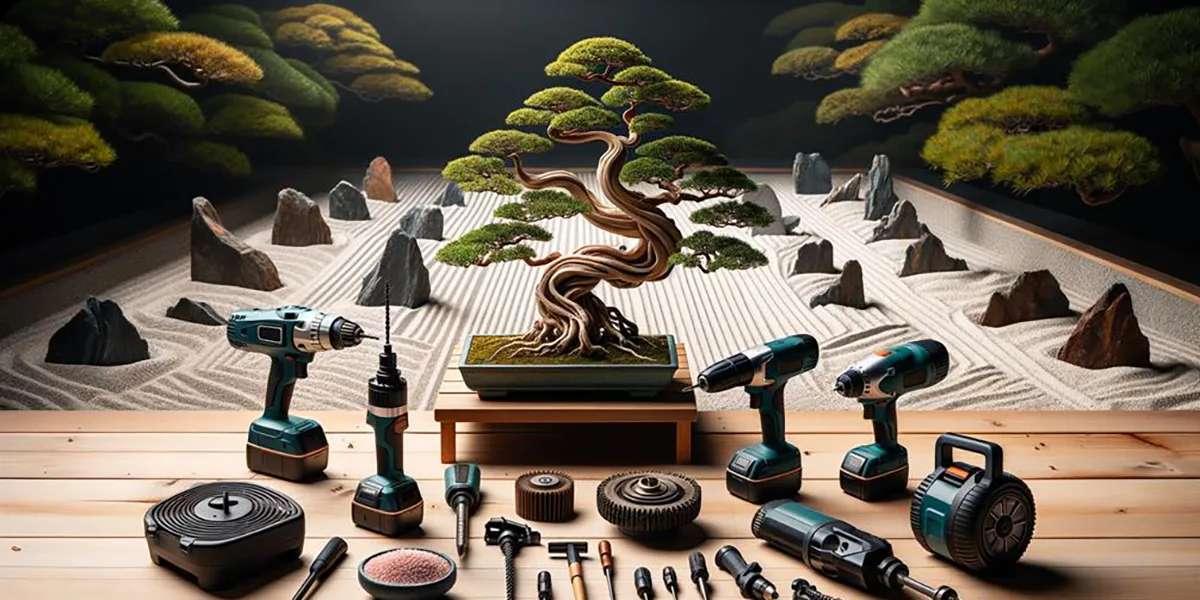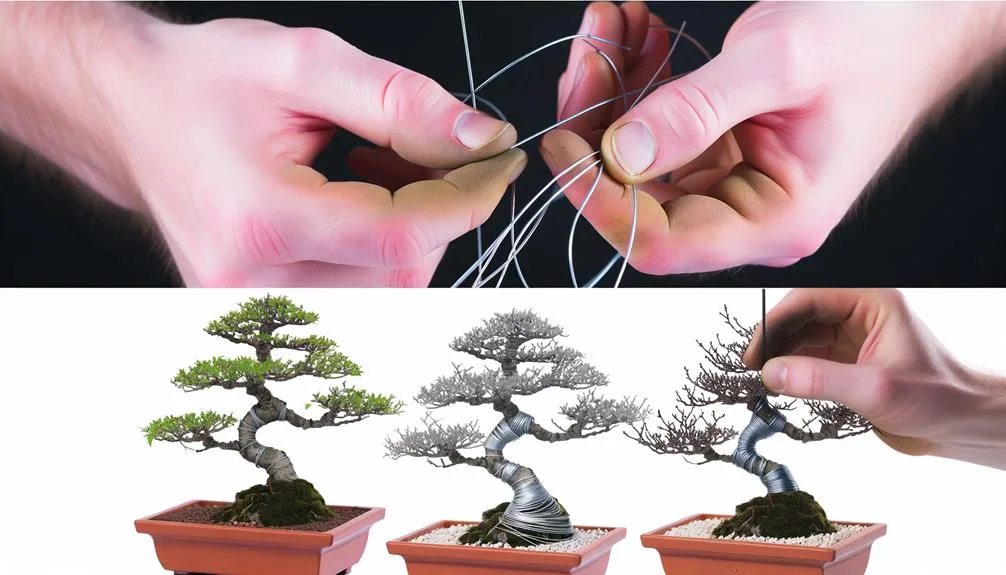I’ve studied bonsai, I’ve practiced the techniques, and now I’m ready to take my skills to the next level: group planting.
This art, creating miniature forests, is as challenging as it is rewarding. Using a variety of trees, I can arrange a small-scale ecosystem that mimics the grandeur of a full-size forest. Just imagine the diversity, the balance, the harmony I can create!
But where do I start? What trees should I choose? And how do I care for this mini forest once it’s established? These are the questions and more that we’ll be exploring together in this guide.
So buckle up, my journey into the world of group planting in bonsai is about to begin.
Key Takeaways
- Group planting in bonsai involves organizing multiple trees in a single pot to create the appearance of a forest.
- Consideration of species compatibility, growth patterns, and aesthetic equilibrium is necessary for successful group planting.
- Essential tools and techniques for bonsai forests include pruning shears, wire cutters, root hooks, and bonsai soil scoop.
- Selecting suitable bonsai tree species requires considering climate, surroundings, and harmonizing different growth patterns.
The Concept of Group Planting In Bonsai
Grasping the principle of Group Planting
In the practice of group planting, numerous trees are organized in a single pot, echoing the innate appearance of a forest. This is done while keeping a watchful eye on species compatibility, growth patterns, and aesthetic equilibrium. This method, also termed as forest or grove planting, holds a significant role in the formation of miniature forests in the realm of bonsai.
This process isn’t as straightforward as it may seem. Each tree species possesses its unique requirements and growth patterns. You must comprehend these factors to guarantee their peaceful coexistence in a restricted area. It’s an art of equilibrium, demanding a sharp eye for design and knowledge of the natural surroundings.
Group planting in the field of bonsai enables you to construct diverse and dynamic arrangements, introducing a new dimension of artistic expression to your work. The aim is to bring forth the serenity of a natural forest setting, right within your pot. Each tree has a part to play in this arrangement, adding to the overall aesthetic equilibrium.
Acquiring proficiency in group planting demands time and practice, but the effort is rewarding. You’ll have the ability to construct miniature forests that not only appear natural but also radiate a sense of tranquility and balance, truly augmenting the allure of bonsai.
Essential Tools for Bonsai Forests
Creating a bonsai forest masterpiece requires specific tools such as pruning shears, wire cutters, root hooks, a bonsai soil scoop, and a watering can with a fine rose attachment. These tools play a significant role in the process of group planting in bonsai, which involves creating miniature forests.
Here’s a closer look at these tools:
- Pruning Shears: These tools are vital for shaping and maintaining your trees. They provide precise cuts and promote clean, healthy growth.
- Wire Cutters: These are used for applying and removing wire. Bonsai involves controlling and shaping the tree’s growth, and the wire helps you guide this process.
- Root Hooks: These tools are used to untangle and arrange roots properly during planting and repotting. Healthy roots are a key factor in a healthy forest.
- Bonsai Soil Scoop and Watering Can: The soil scoop is used for adding and arranging soil in the pot. The watering can provides gentle, precise watering.
The effective use of these tools is crucial to mastering the art of bonsai. With these tools, you’re set on the path to create your very own bonsai forest masterpiece.
Selecting Suitable Bonsai Tree Species
You need to identify ideal bonsai species for group planting.
Understand how different species grow and interact together.
Learn some care tips to keep your bonsai species healthy and thriving.
Identifying Ideal Bonsai Species
Choosing the right bonsai tree species for group planting requires more than just selecting the trees you like best. It involves considering the climate you live in, getting to know the growth patterns of different species, and getting tips from those who’ve more experience.
To identify the perfect bonsai species, follow these steps:
- Take into account your surroundings. Different bonsai species thrive in different climates.
- Investigate the growth patterns of possible species. Some trees grow at a faster pace than others, which might affect how your bonsai forest appears.
- Search for species that harmonize well together. Aim for a balanced combination of trees, not a disorganized mess.
- Get tips from other bonsai lovers. They can provide valuable insights about which species work best for group planting.
Understanding Species Growth Patterns
Entering into the realm of bonsai tree species, it’s significant to comprehend how varied growth patterns can shape the equilibrium and unity of your miniature forest. When assembling a group of plants in bonsai, take into account the growth speed and magnitude of each species. Gaining knowledge about species growth patterns enables you to predict their long-term evolution.
Choose species that have compatible needs for easier upkeep and care. Investigate each species’ growth tendencies to form a cohesive, attractive composition. Don’t hesitate to solicit advice from seasoned bonsai fans. They can offer beneficial insights into picking appropriate tree species for your mini forest.
Keep in mind, the secret to a thriving bonsai forest lies in recognizing and harmonizing the different growth patterns.
Bonsai Species Care Tips
Understanding the growth patterns of different species is crucial when selecting suitable bonsai tree species for your mini garden. Here are some tips for bonsai species care:
- Choose species with similar growth needs. This will ensure your bonsai trees coexist peacefully in your mini garden.
- Consider the visual appeal. The visual compatibility of the species you choose is important for group planting in bonsai, or creating miniature forests.
- Make sure to learn about the specific needs and growth rates of your chosen species. You want to make sure they’re right for a mini forest.
- If you’re just starting out, consider starting with a single-species forest. This will allow you to gain experience before moving on to planting multiple species.
Mastering the Art of Bonsai Arrangement
Now, let’s explore the art of bonsai arrangement.
You’ll learn about different bonsai tree types, essential arrangement techniques, and how to achieve balance in your design.
It’s not just about planting, it’s about creating a miniature forest that’s both beautiful and balanced.
Understanding Bonsai Tree Types
In the journey of mastering bonsai arrangement artistry, it’s vital to comprehend that various bonsai tree types possess unique rates of growth and needs.
Let’s have a quick overview:
- The rate at which each tree species matures is distinct. Some reach maturity swiftly, while others demand patience.
- Balancing various tree types in a group planting of bonsai might pose a challenge due to their unique needs.
- The size of leaves or needles isn’t consistent across species. This might lead to confusion, but it’s part of the bonsai tree types.
- Crafting a unified composition in a compact pot is a form of art. Incorporating diverse elements might disrupt the intended image.
Essential Bonsai Arrangement Techniques
When you tackle the specific requirements and growth speeds of diverse bonsai tree types, mastering bonsai arrangement techniques becomes a vital skill.
For a natural-looking group planting in bonsai, think about a scalene triangle outline. Make sure to vary the sizes of the trees and angle those on the periphery to provide a sense of perspective and depth.
Fix the trees into the pot using wires, loops, or stiff plastic mesh, with the choice depending on the size of the pot.
The type of species chosen impacts the appearance of your forest bonsai. Take into account the trunk size, look, and spacing to reach a natural aesthetic.
Acquire knowledge from acclaimed experts like Saburo Kato and Bill Valavanis for successful group plantings.
Keep in mind, choosing the right time to carry out group plantings is just as vital as the technique.
Achieving Balance in Design
Mastering the art of bonsai arrangement implies that one has to grasp the concept of balance in design, coordinating tree species with different growth rates and needs. This aspect is vital when dealing with group planting in bonsai.
Consider the subsequent steps to assist you in this venture:
- Harmonize tree species: Opt for species that grow at comparable rates and have similar needs.
- Plan meticulously: Take into account the size of leaves or needles of each species to sustain balance.
- Begin with a single-species: If you’re a novice, acquire experience by training a single-species forest first.
- Learn from others: Seek advice from seasoned bonsai enthusiasts to comprehend species needs better.
The Importance of Proper Soil Mixtures
Recognizing the significance of appropriate soil mixtures is a crucial point; they’re vital for providing optimal drainage, aeration, and nutrition for your forest bonsai.
Soil mixtures, especially a blend of akadama, play a significant role in bonsai health.
Such mixtures make sure your trees receive necessary nutrients. They function in moisture retention, warding off issues like excessive watering. A quality soil mix is also adapted to your trees’ needs, taking into account their distinct requirements. It’s not a universal solution, so focus on what your trees require.
A well-proportioned soil mixture is crucial. It preserves the comprehensive health and vitality of your forest bonsai. So, don’t disregard it. This isn’t a zone to skimp or make do.
Your soil mix is a cornerstone for your bonsai forest’s success.
Detailing and Pruning Techniques
To keep your bonsai forest looking natural and harmonious, it’s necessary to effectively apply detailing and pruning techniques. The practice of group planting in bonsai calls for careful execution of these methods. Let’s discuss these techniques:
- Pruning for Shape:
- Pruning is used to direct the growth of your trees, helping maintain the appearance of a miniature forest.
- Strategic pruning can create depth and perspective, with the tallest tree serving as the group’s main attraction.
- Detailing for Natural Look:
- Detailing is the procedure of creating a natural-looking branch structure and foliage distribution.
- The goal isn’t solely growing trees; rather, it’s about crafting a landscape.
- Harmonious Growth:
- Pruning’s purpose extends beyond shape; it’s also aimed at harmony.
- It’s used to regulate the growth of individual trees so they complement each other instead of competing.
- Evoking Age and Maturity:
- Detailing and pruning techniques can be used to make your bonsai forest look aged and naturally grown.
- This is the craft of making something new appear as though it’s been present for years.
These techniques demand time and practice to master, but the outcome is a beautifully balanced, miniature forest that’s a delight to view.
Long-Term Care and Maintenance
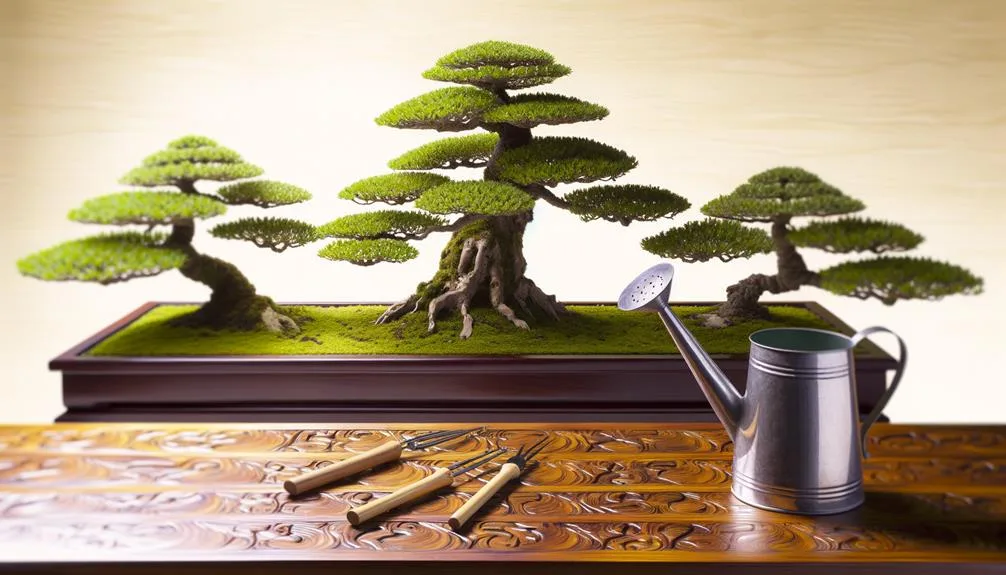
Maintaining the form and detail of your bonsai forest is crucial, but the significance of long-term care and maintenance shouldn’t be overlooked to ensure the survival and growth of your tiny ecosystem.
The creation of tiny forests through group planting in bonsai demands continuous care and nurture.
Consistently hydrate your bonsai trees. Sufficient water supply aids their healthy growth and keeps them from desiccating.
Pruning and shaping are also critical components of long-term care. Keep the trees trimmed regularly to uphold the preferred aesthetics and to prevent them from becoming too dense as they grow.
Be vigilant for pests and diseases. Timely action can ensure the enduring health and vibrancy of your trees.
Another critical part of maintenance is fertilization. Feed your trees necessary nutrients regularly to support their growth and vitality.
Lastly, anticipate repotting every 2-3 years. This rejuvenates the soil and encourages continuous health and growth of your bonsai forest.
Essentially, bonsai artistry isn’t solely about crafting miniature forests, but also about giving them the long-term care and maintenance they require to prosper.
Showcasing Your Bonsai Miniature Forest
After diligently caring for your bonsai trees and cultivating a prosperous miniature forest, the next step is to put your efforts on display in an attractive and harmonious manner. Presenting your bonsai forest demands meticulous attention to detail and an eye for beauty.
Here’s how to create a striking display:
- Assess the pot: Opt for a pot that suits the size and structure of your miniature forest. The pot should augment the aesthetic charm of your arrangement.
- Try different species: Diversity adds a visual spark. Integrating different species in your group planting in your bonsai forest can lead to a beautifully varied composition.
- Adopt the scalene triangle concept: Organize your trees in a manner that creates a scalene triangle. This leads to a natural, balanced display.
- Develop perspective: Alter the size and tilt of your trees. This gives your miniature forest a sense of depth, making it more dynamic and pleasing to the eye.
Frequently Asked Questions
What Is the Japanese Hobby of Cultivating Miniature Trees?
The Japanese hobby of cultivating miniature trees is called bonsai. You’ll focus on bonsai aesthetics, shaping trees artistically. It’s culturally significant, reflecting nature’s harmony and the passage of time in a tranquil, compact space.
Are There Bonsai Forests?
Yes, there are bonsai forests. You can create a miniature forest, enhancing its aesthetics through group planting. However, you’ll need to master specific bonsai maintenance techniques to ensure the health and growth of your forest.
What Are Miniature Trees Created by the Samurai?
You’re asking about the miniature trees crafted by samurai. Called ‘mimikaki’, these symbolic miniatures reflect samurai gardening techniques and their profound connection to nature. They served as meditation focal points, embodying tranquility and serenity.
How Do You Multiply Bonsai Trees?
To multiply bonsai trees, you’ll use bonsai propagation techniques like root cutting methods. It’s a process where you’ll trim a tree’s roots, plant them, and patiently wait for new growth to appear.
